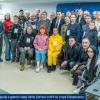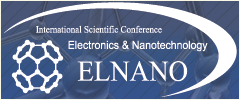Feed aggregator
Scaling up the Smart Manufacturing Mountain
Courtesy: Rockwell Automation
| A step-by-step roadmap to adopting smart manufacturing tools, boosting efficiency, and unifying systems for a smoother digital transformation journey. |
Embracing new technology in manufacturing is similar to ascending a mountain since it requires strategy, pacing, and the right gear. Rushing ahead without proper support can strain your systems as well as your people, but with thoughtful planning and timely technology selection, the climb becomes manageable and rewarding.
There are many paths to digital excellence. Integrating new technologies can significantly boost productivity and efficiency, but even the smoothest rollouts can come with hurdles. In our decades of experience working with customers, we’ve learned the importance of taking a measured approach to change to avoid unnecessary disruption. Here, we’ll lay out one way to approach digital transformation.
Beginning the Climb: Laying the Foundation
For many manufacturers, an accessible starting point for digital transformation is real-time production monitoring. Production monitoring enhances visibility and empowers your team to manage performance proactively—without overhauling existing workflows.
By consolidating machine and system data into a single dashboard, production monitoring eliminates silos and simplifies decision-making. It equips your team with actionable KPIs and insights from the shop floor to the executive suite.
With minimal investment in time, budget, and effort, real-time monitoring can deliver immediate value—which makes it an ideal first step on your digital journey.
Climbing Higher: Expanding Capabilities
While production monitoring is a strong foundation, it’s just the beginning. To unlock deeper efficiencies, manufacturers can next implement systems that offer broader control and insight across operations.
A modern manufacturing execution system (MES) is a prime example. By automating routine tasks, a MES reduces errors, cuts costs, and improves profitability. It also provides end-to-end visibility, communication, and traceability throughout the production lifecycle.
Pairing MES with a robust enterprise resource planning (ERP) system further enhances operational oversight. ERP tools help streamline compliance, manage risk, and align financial, operational, and IT strategies under one umbrella.
The real power lies in integrating these systems. When MES, ERP, and other tools work together in harmony, manufacturers can experience transformative results.
Reaching the Peak: Unlocking Full Potential
Even with a unified platform, there’s still room to elevate your operations. Today’s smart tools don’t just optimize—they redefine what’s possible.
Plex MES Automation and Orchestration leverages cutting-edge technology to connect machines and deliver unprecedented transparency and control. With intuitive low-code integration, your team can customize workflows and achieve seamless automation across the plant floor.
Gear Up for Your Digital Climb
According to our 10th Annual State of Smart Manufacturing report, many manufacturers feel they’re falling behind technologically compared to last year. If you’re exploring new solutions but unsure about the path forward, you’re not alone.
Whether you’re just beginning your smart manufacturing journey or seeking advanced, integrated solutions, we’d like to help! Check out our case study library to see how we’ve helped companies just like yours take on projects to advance their digital transformation journey.
The post Scaling up the Smart Manufacturing Mountain appeared first on ELE Times.
Singapore’s largest industrial district cooling system, Now operational at ST’s AMK TechnoPark
The District Cooling System at ST’s Ang Mo Kio (AMK) TechnoPark is operational and on time. Ms. Low Yen Ling, Senior Minister of State, Ministry of Trade and Industry & Ministry of Culture, Community and Youth, who joined ST in announcing this project in 2022, now took part in the inauguration ceremony. This launch is a critical milestone in ST’s goal to achieve carbon neutrality by 2027, and to work with local partners while also serving the communities as we move toward this sustainability objective.
Why a District Cooling System? Composition of a District Cooling System ST’s Ang Mo Kio TechnoPark in Singapore
ST’s Ang Mo Kio TechnoPark in Singapore
In a DCS, one plant cools water before sending it to a network of underground pipes that serve various buildings. The system thus pools resources to increase efficiency, reduce environmental impacts, and save space. Buildings no longer need chillers, saving power and maintenance costs thanks to the central plant. Moreover, a loop sends the water back to the plant to cool it again. The main plant also stores water. Cooling therefore can happen during off-peak periods to improve the efficiency.
According to the Encyclopedia of Energy, the first significant DCS project dates back to 1962 and was installed in the United States. The technology garnered some interest in the 70s before subsiding. DCS became popular again in the 90s as regulators mandated chlorofluorocarbons (CFC) reduction. And now, district cooling systems gain new grounds as the world looks to reduce carbon emissions and recycle water.
Why the ST Ang Mo Kio TechnoPark?
Anatomy of a Unique Project
The AMK TechnoPark is ST’s largest wafer-production fab by volume. Bringing DCS to that particular site will thus have significant ripple effects. Traditionally, projects of this size target urban developments. For instance, the Deep Lake Water Cooling infrastructure in Toronto, Canada, has a similar capacity (40,000 tons), but the distribution network covers a chunk of the downtown area. The ST and SP Group infrastructure is thus unique because it’s one of the first at such a scale to cool an industrial manufacturing plant. It is also a first in the semiconductor industry. Most projects from competing fabs retrofit new chillers. With this new DCS, ST can re-purpose the space in favor of something much more efficient.
The project will cost an estimated USD 370 million, including the construction of the central cooling plant right next to the TechnoPark. Beyond energy savings, removing chillers within the ST plant will free up space for other environmental programs. For instance, the AMK site is looking at water conservation and solar panels, among other things. The SP Group should start construction of the central plant this year and is committed to managing the project for at least the next 20 years. Singapore also hopes that this project will inspire other companies. As Ms Low Yen Ling, Minister of State, Ministry of Culture, Community and Youth & Ministry of Trade and Industry stated, “I hope this initiative will inspire many more innovative decarbonization solutions across other industrial developments, and spur more companies to seek opportunities in sustainability.”
The post Singapore’s largest industrial district cooling system, Now operational at ST’s AMK TechnoPark appeared first on ELE Times.
Navitas consolidates Asian franchised distributor base
"Кібергігієна в школах України" та "Safe Life:навички порятунку" від ІСЗЗІ
ІСЗЗІ КПІ ім. Ігоря Сікорського реалізує одразу дві важливі власні соціальні ініціативи, спрямовані на формування навичок цифрової грамотності та дій у надзвичайних ситуаціях в учнів закладів загальної середньої освіти.
A makeshift motion-activated lamp
 | I had an awful lot of power outages lately and decided to make a lamp based on a 12V 10W LED I had laying around. It is controlled by a dimmer with a 555 timer, modified by connecting the reset pin to a switch. This gives the devices 3 modes - off, on, or triggered by a motion sensor. I am quite proud of myself for figuring out the motion activation without using an MCU. The device is powered by any qc/pd device via a trigger or an external battery. And yes, it would be better with a 3d printed case, but I had to move and couldn't take my 3d printers with me yet, so this one is held together with hot glue and hope for a better future cardboard. [link] [comments] |
Does (wearing) an Oura (smart ring) a day keep the doctor away?

Before diving into my on-finger impressions of Oura’s Gen3 smart ring, as I’d promised I’d do back in early September, I thought I’d start off by revisiting some of the business-related topics I mentioned in that initial post in the series. First off, I mentioned at the end of that post that Oura had just obtained a favorable final judgment from the United States International Trade Commission (ITC) that both China-based RingConn and India-based Ultrahuman had infringed on its patent portfolio. In the absence of licensing agreements or other compromises, both Oura competitors would be banned from further product shipments to and sales of their products in the US after a final 60-day review period ended on October 21, although retailer partners could continue to sell their existing inventory until it was depleted.
Product evolutions and competition developmentsI’m writing these words 10 days later, on Halloween, and there’ve been some interesting developments. I’d intentionally waited until after October 21 in order to see how both RingConn and Ultrahuman would react, as well as to assess whether patent challenges would pan out. As for Ultrahuman, a blog post posted shortly before the deadline (and updated the day after) made it clear that the company wasn’t planning on caving:
- A new ring design is already in development and will launch in the U.S. as soon as possible.
- We’re actively seeking clarity on U.S. manufacturing from our Texas facility, which could enable a “Made in USA” Ring AIR in the near future.
- We also eagerly await the U.S. Patent and Trademark Office’s review of the validity of Oura’s ‘178 patent, which it acquired in 2023, and is central to the ITC ruling. A decision is expected in December.
To wit, per a screenshot I captured the day after the deadline, Wednesday, October 22, sales through the manufacturer’s website to US customers had ceased.

And surprisingly, inventory wasn’t listed as available for sale on Amazon’s website, either.
RingConn conversely took a different tack. On October 22, again, when I checked, the company was still selling its products to US customers both from its own website and Amazon’s:


This situation baffled me until I hit up the company subreddit and saw the following:
Dear RingConn Family,
We’d like to share some positive news with you: RingConn, a leading smart ring innovator, has reached a settlement with ŌURA regarding a patent dispute. Under the terms of the agreement, RingConn’s software and hardware products will remain available in the U.S. market, without affecting its market presence.
See the company’s Reddit post for the rest of the message. And here’s the official press release.
Secondly, as I’d noted in my initial coverage:
One final factor to consider, which I continue to find both surprising and baffling, is the fact that none of the three manufacturers I’ve mentioned here seems to support having more than one ring actively associated with an account, therefore, cloud-logging and archiving data, at the same time. To press a second ring into service, you need to manually delete the first one from your account first. The lack of multi-ring support is a frequent cause of complaints on Reddit on elsewhere, from folks who want to accessorize multiple smart rings just as they do with normal rings, varying color and style to match outfits and occasions. And the fiscal benefit to the manufacturers of such support is intuitively obvious, yes?
It turns out I just needed to wait a few weeks. On October 1, Oura announced that multiple Oura Ring 4 styles would soon be supported under a single account. Quoting the press release, “Pairing and switching among multiple Oura Ring 4 devices on a single account will be available on iOS starting Oct. 1, 2025, and on Android starting Oct. 20, 2025.” That said, a crescendo of complaints on Reddit and elsewhere suggests an implementation delay; I’m 11 days past October 20 at this point and haven’t seen the promised Android app update yet, and at least some iOS users have waited a month at this point. Oura PR told me that I should be up and running by November 5; I’ll follow up in the comments as to whether this actually happened.
Charging optionsThat same day, by the way, Oura also announced its own branded battery-inclusive charger case, an omission that I’d earlier noted versus competitor RingConn:

That said, again quoting from the October 1 press release (with bolded emphasis mine), the “Oura Ring 4 Charging Case is $99 USD and will be available to order in the coming months.” For what it’s worth, the $28.99 (as I write these words) Doohoeek charging case for my Gen3 Horizon:

is working like a charm:


Behind it, by the way, is the upgraded Doohoeek $33.29 charging case for my Oura Ring 4, whose development story (which I got straight from the manufacturer) was not only fascinating in its own right but also gave me insider insight into how Oura has evolved its smart ring charging scheme for the smart ring over time. More about that soon, likely next month.

And here’s my Gen3 on the factory-supplied, USB-C-fed standard charger, again with its Ring 4 sibling behind it:

As for the ring itself, here’s what it looks like on my left index finger, with my wedding band two digits over from it on the same hand:


And here again are all three rings I’ve covered in in-depth writeups to date: the Oura Gen3 Horizon at left, Ultrahuman Ring AIR in the middle and RingConn Gen 2 at right:

Like RingConn’s product:

both the Heritage:

and my Horizon variant of the Oura Gen3:


include physical prompting to achieve and maintain proper placement: sensor-inclusive “bump” guides on both sides of the backside inside, which the Oura Ring 4 notably dispenses with:

I’ve already shown you what the red glow of the Gen3 intermediary SpO2 (oxygen saturation) sensor looks like when in operation, specifically when I’m able to snap a photo of it soon enough after waking to catch it still in action before it discerns that I’ve stirred and turns off:

And here’s what the two green-color pulse rate sensors, one on either side of their SpO2 sibling:

look like in action:

Generally speaking, the Oura Gen3 feels a lot like the Ultrahuman Ring AIR; they both drop between 15-20% of battery charge level every 24 hours, leading to a sub-week operating life between recharges. That said, I will give Oura well-deserved kudos for its software user interface, which is notably more informative, intuitive and more broadly easier to use than its RingConn and Ultrahuman counterparts. Then again, Oura’s been around the longest and has the largest user base, so it’s had more time (and more feedback) to fine-tune things. And cynically speaking, given Oura’s $5.99/month or $69.99/year subscription fee, versus competitors’ free, it’d better be better!
Software insightsIn closing, and in fairness, regarding that subscription, it’s not strictly required to use an Oura smart ring. That said, the information supplied without it:


is a pale subset of the norm:



What I’m showing in the overview screen images is a fraction of the total information captured and reported, but it’s all well-organized and intuitive. And as you can see on that last one, the Oura smart ring is adept at sensing even brief catnaps 
With that, and as I’ve already alluded, I now have an Oura Ring 4 on-finger—two of them, in fact, one of which I’ll eventually be tearing down—which I aspire to write up shortly, sharing my impressions both versus its Gen3 predecessor and its competitors. Until then, I as-always welcome your thoughts in the comments!
—Brian Dipert is the Principal at Sierra Media and a former technical editor at EDN Magazine, where he still regularly contributes as a freelancer.
Related Content
- The Smart Ring: Passing fad, or the next big health-monitoring thing?
- RingConn: Smart, svelte, and econ(omical)
- Can a smart ring make me an Ultrahuman being?
- Smarty Ring Fails to Impress
- Smart ring allows wearer to “air-write” messages with a fingertip
The post Does (wearing) an Oura (smart ring) a day keep the doctor away? appeared first on EDN.
Відкритий ветеранський турнір з довгих нард «Воїн Світла» в КПІ ім. Ігоря Сікорського
26 листопада 2025 року у смартукритті CLUST Space в Науково-технічній бібліотеці ім. Г. І. Денисенка (Бібліотека КПІ ім. Ігоря Сікорського) відбувся перший Відкритий ветеранський турнір з довгих нард «Воїн Світла» – подія для соціальної інтеграції і підтримки ветеранів, їх взаємодії між собою та з університетською спільнотою.
Nimy gains CSIRO Kick-Start program funding for gallium exploration
STMicroelectronics’ new GaN ICs platform for motion control boosts appliance energy ratings
STMicroelectronics unveiled new smart power components that let home appliances and industrial drives leverage the latest GaN (gallium-nitride) technology to boost energy efficiency, increase performance, and save cost.
GaN power adapters and chargers available in the market can handle enough power for laptops and USB-C fast charging to achieve extremely high efficiency to meet stringent incoming eco-design norms. ST’s latest GaN ICs now make this technology applicable to motor drives for products like washing machines, hairdryers, power tools, and factory automation.
“Our new GaNSPIN system-in-package platform unleashes wide-bandgap efficiency gains in motion-control applications by introducing special features that optimize system performance and safeguard reliability,” said Domenico Arrigo, General Manager, Application Specific Products Division, STMicroelectronics. “The new devices enable future generations of appliances to achieve higher rotational speed for improved performance, with smaller and lower-cost control modules, lightweight form factors, and improved energy ratings.”
The first members of ST’s new family, the GANSPIN611 and GANSPIN612, can power motors of up to 400 Watts including domestic and industrial compressors, pumps, fans, and servo drives. Pin compatibility between the two devices ensures designs are easily scalable. GANSPIN611 is in production now, in a 9mm x 9mm thermally enhanced QFN package, from $4.44.
Technical notes on GaNSPIN drivers:
In the new GaNSPIN system-in-package, unlike in general-purpose GaN drivers, the driver controls turn-on and turn-off times in hard switching to relieve stress on the motor windings and minimize electromagnetic noise. The nominal slew rate (dV/dt) of 10V/ns preserves reliability and eases compliance with electromagnetic compatibility (EMC) regulations such as the EU EMC directive. Designers can adjust the turn-on dV/dt of both GaN drivers to fine-tune the switching performance according to the motor characteristics.
The post STMicroelectronics’ new GaN ICs platform for motion control boosts appliance energy ratings appeared first on ELE Times.
Inside the battery: A quick look at internal resistance

Ever wondered why a battery that reads full voltage still struggles to power your device? The answer often lies in its internal resistance. This hidden factor affects how efficiently a battery delivers current, especially under load.
In this post, we will briefly examine the basics of internal resistance—and why it’s a critical factor in real-world performance, from handheld flashlights to high-power EV drivetrains.
What’s internal resistance and why it matters
Every battery has some resistance to the flow of current within itself—this is called internal resistance. It’s not a design flaw, but a natural consequence of the materials and construction. The electrolyte, electrodes, and even the connectors all contribute to it.
Internal resistance causes voltage to drop when the battery delivers current. The higher the current draw, the more noticeable the drop. That is why a battery might read 1.5 V at rest but dip below 1.2 V under load—and why devices sometimes shut off even when the battery seems “full.”
Here is what affects it:
- Battery type: Alkaline, lithium-ion, and NiMH cells all have different internal resistances.
- Age and usage: Resistance increases as the battery wears out.
- Temperature: Cold conditions raise resistance, reducing performance.
- State of charge: A nearly empty battery often shows higher resistance.
Building on that, internal resistance gradually increases as batteries age. This rise is driven by chemical wear, electrode degradation, and the buildup of reaction byproducts. As resistance climbs, the battery becomes less efficient, delivers less current, and shows more voltage drop under load—even when the resting voltage still looks healthy.
Digging a little deeper—focusing on functional behavior under load—internal resistance is not just a single value; it’s often split into two components. Ohmic resistance comes from the physical parts of the battery, like the electrodes and electrolyte, and tends to stay relatively stable.
Polarization resistance, on the other hand, reflects how the battery’s chemical reactions respond to current flow. It’s more dynamic, shifting with temperature, charge level, and discharge rate. Together, these resistances shape how a battery performs under load, which is why two batteries with identical voltage readings might behave very differently in real-world use.
Internal resistance in practice
Internal resistance is a key factor in determining how much current a battery can deliver. When internal resistance is low, the battery can supply a large current. But if the resistance is high, the current it can provide drops significantly. Also, higher the internal resistance, the greater the energy loss—this loss manifests as heat. That heat not only wastes energy but also accelerates the battery’s degradation over time.
The figure below illustrates a simplified electrical model of a battery. Ideally, internal resistance would be zero, enabling maximum current flow without energy loss. In practice, however, internal resistance is always present and affects performance.

Figure 1 Illustration of a battery’s internal configuration highlights the presence of internal resistance. Source: Author
Here is a quick side note regarding resistance breakdown. Focusing on material-level transport mechanisms, battery internal resistance comprises two primary contributors: electronic resistance, driven by electron flow through conductive paths, and ionic resistance, governed by ion transport within the electrolyte.
The total effective resistance reflects their combined influence, along with interfacial and contact resistances. Understanding this layered structure is key to diagnosing performance losses and carrying out design improvements.
As observed nowadays, elevated internal resistance in EV batteries hampers performance by increasing heat generation during acceleration and fast charging, ultimately reducing driving range and accelerating cell degradation.
Fortunately, several techniques are available for measuring a battery’s internal resistance, each suited to different use cases and levels of diagnostic depth. Common methods include direct current internal resistance (DCIR), alternating current internal resistance (ACIR), and electrochemical impedance spectroscopy (EIS).
And there is a two-tier variation of the standard DCIR technique, which applies two sequential discharge loads with distinct current levels and durations. The battery is first discharged at a low current for several seconds, followed by a higher current for a shorter interval. Resistance values are calculated using Ohm’s law, based on the voltage drops observed during each load phase.
Analyzing the voltage response under these conditions can reveal more nuanced resistive behavior, particularly under dynamic loads. However, the results remain strictly ohmic and do not provide direct information about the battery’s state of charge (SoC) or capacity.
Many branded battery testers, such as some product series from Hioki, apply a constant AC current at a measurement frequency of 1 kHz and determine the battery’s internal resistance by measuring the resulting voltage with an AC voltmeter (AC four-terminal method).

Figure 2 The Hioki BT3554-50 employs AC-IR method to achieve high-precision internal resistance measurement. Source: Hioki
The 1,000-hertz (1 kHz) ohm test is a widely used method for measuring internal resistance. In this approach, a small 1-kHz AC signal is applied to the battery, and resistance is calculated using Ohm’s law based on the resulting voltage-to-current ratio.
It’s important to note that AC and DC methods often yield different resistance values due to the battery’s reactive components. Both readings are valid—AC impedance primarily reflects the instantaneous ohmic resistance, while DC measurements capture additional effects such as charge transfer and diffusion.
Notably, the DC load method remains one of the most enduring—and nostalgically favored—approaches for measuring a battery’s internal resistance. Despite the rise of impedance spectroscopy and other advanced techniques, its simplicity and hands-on familiarity continue to resonate with seasoned engineers.
It involves briefly applying a load—typically for a second or longer—while measuring the voltage drop between the open-circuit voltage and the loaded voltage. The internal resistance is then calculated using Ohm’s law by dividing the voltage drop by the applied current.
A quick calculation: To estimate a battery’s internal resistance, you can use a simple voltage-drop method when the open-circuit voltage, loaded voltage, and current draw are known. For example, if a battery reads 9.6 V with no load and drops to 9.4 V under a 100-mA load:
Internal resistance = 9.6 V-9.4 V/0.1 A = 2 Ω
This method is especially useful in field diagnostics, where direct resistance measurements may not be practical, but voltage readings are easily obtained.
In simplified terms, internal resistance can be estimated using several proven techniques. However, the results are influenced by the test method, measurement parameters, and environmental conditions. Therefore, internal resistance should be viewed as a general diagnostic indicator—not a precise predictor of voltage drop in any specific application.
Bonus blueprint: A closing hardware pointer
For internal resistance testing, consider the adaptable e-load concept shown below. It forms a simple, reliable current sink for controlled battery discharge, offering a practical starting point for further refinement. As you know, the DC load test method allows an electronic load to estimate a battery’s internal resistance by observing the voltage drop during a controlled current draw.

Figure 3 The blueprint presents an electronic load concept tailored for internal resistance measurement, pairing a low-RDS(on) MOSFET with a precision load resistor to form a controlled current sink. Source: Author
Now it’s your turn to build, tweak, and test. If you have got refinements, field results, or alternate load strategies, share them in the comments. Let us keep the circuit conversation flowing.
 T. K. Hareendran is a self-taught electronics enthusiast with a strong passion for innovative circuit design and hands-on technology. He develops both experimental and practical electronic projects, documenting and sharing his work to support fellow tinkerers and learners. Beyond the workbench, he dedicates time to technical writing and hardware evaluations to contribute meaningfully to the maker community.
T. K. Hareendran is a self-taught electronics enthusiast with a strong passion for innovative circuit design and hands-on technology. He develops both experimental and practical electronic projects, documenting and sharing his work to support fellow tinkerers and learners. Beyond the workbench, he dedicates time to technical writing and hardware evaluations to contribute meaningfully to the maker community.
Related Content
- All About Batteries
- What Causes Batteries to Fail?
- Power Consumption and Battery Life Analysis
- Resistivity is the key to measuring electrical resistance
- Cell balancing maximizes the capacity of multi-cell batteries
The post Inside the battery: A quick look at internal resistance appeared first on EDN.
PCB Easter eggs on Zebra printers
 | submitted by /u/freeflight_ua [link] [comments] |
Workbench and work area.
 | I can never keep this clean, its one thing after another. [link] [comments] |
Quantum Critical Metals and Nusano collaborate on developing and refining critical minerals in North America
Quantum Critical Metals and Nusano collaborate on developing and refining critical minerals in North America
Thank God they included the High Power Imported Heater with my new soldering iron.
 | It would've been a shame if it was domestic [link] [comments] |
Silanna UV’s 235nm far-UVC LEDs inactivate multiple H5N1 avian ’flu virus strains
Silanna UV’s 235nm far-UVC LEDs inactivate multiple H5N1 avian ’flu virus strains
КПІ. Вулиця Михайла Брайчевського
Ім'я Михайла Брайчевського – українського історика, археолога й громадського діяча – носить вулиця в студмістечку КПІ. Наприкінці 2022-го таке рішення ухвалила Київська міська рада з метою деколонізації столичної топоніміки.
My Workbench Hobby
 | submitted by /u/BetimSec [link] [comments] |
My closet workbench
 | Just cleaned up and reorganized my small bench setup yesterday and thought I could get some critiques on what might be missing. not shown is a HP 8592 Spectrum analyzer and HP 54615B 500 MHz OScope. [link] [comments] |






